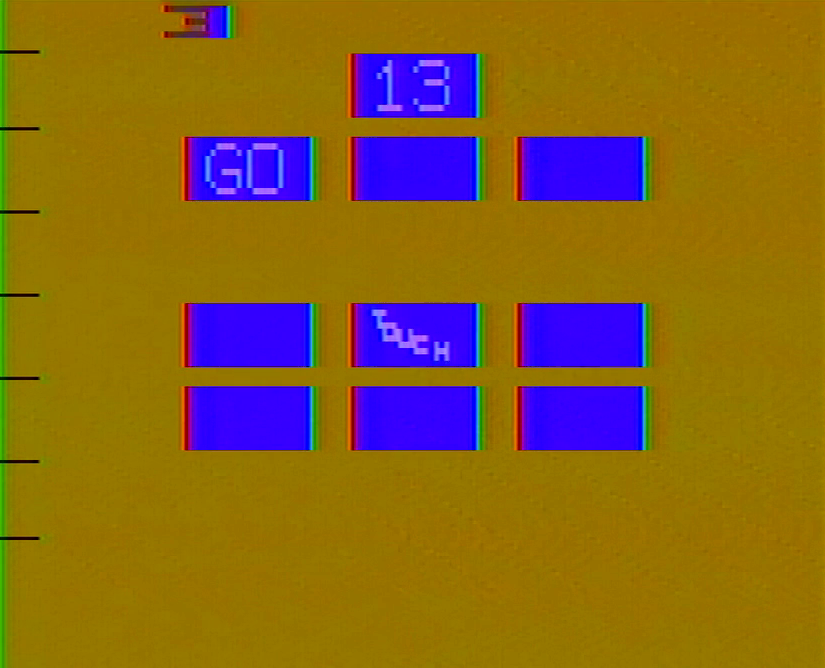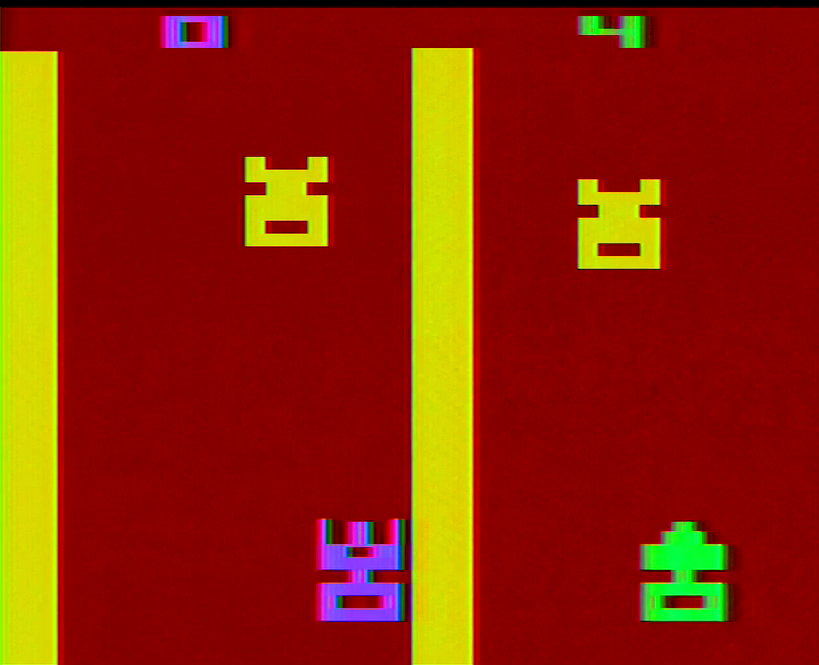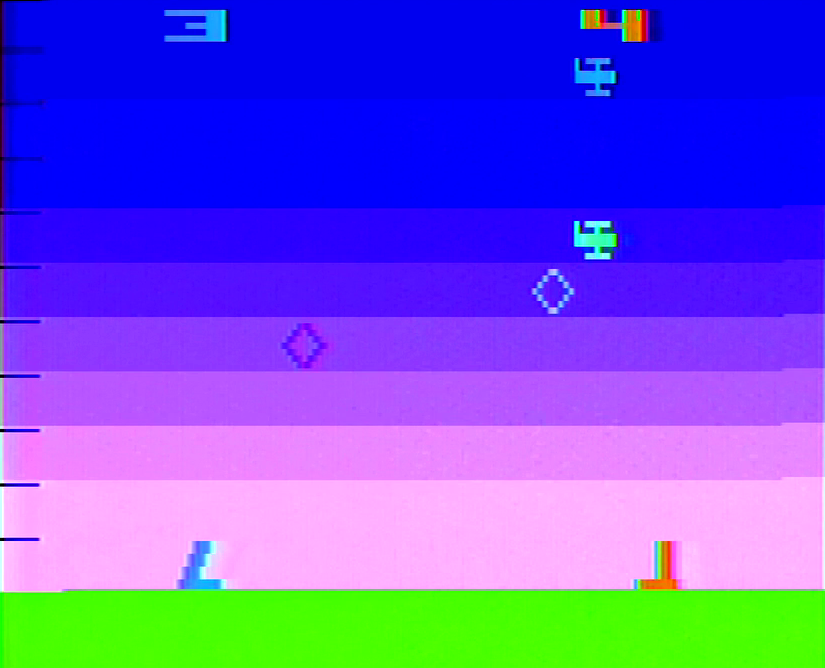
The vast majority of the early VCS games covered so far were games that the developers were personally interested in putting together. Whether these were ports of popular arcade games, conversions of tabletop timewasters, or novel concepts, marketing had largely stayed out of the way on what games came along and focused on selling them. But there were exceptions, even at this stage, of which Brain Games is one.
The crux of the marketing department’s request involves the VCS’s mix of controllers. You’ve got the two major ones that were packed in with the console itself from the get go: the joystick and the paddle controllers. The vast majority of the games on the platform use the joystick, which is surprisingly flexible for having one button. A smaller number use the paddle controller, which is much more limited in the types of games that it excels at; developer Larry Kaplan noted that marketing specifically requested that the programmers create games that use the paddles to ensure that users were still getting use out of them, which is why he put together Street Racer for the VCS’s 1977 lineup. The VCS also hosted two other controller types though: The driving controller, used in the system’s heyday with only Indy 500; and the keyboard controller.


